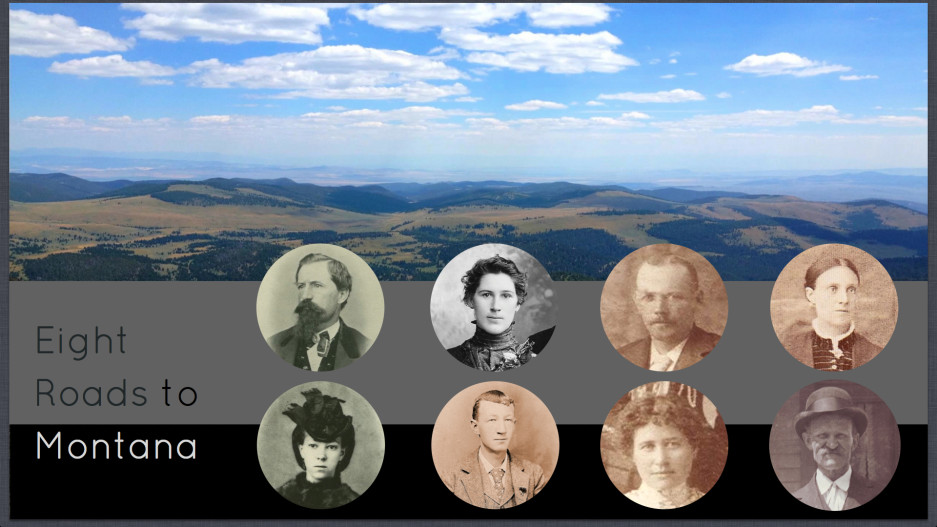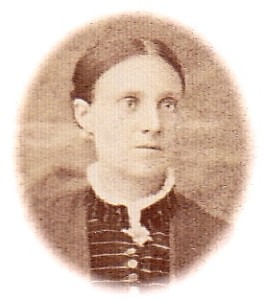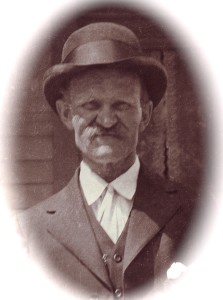On Tuesday, January 17, 1893, twenty-nine year old Brita Johansdotter1, wife of Anders “Andrew” Dalin2, and mother of two children, Johan and Helena, awoke knowing that the following Sunday she would leave her home in Hudiksvall, Sweden – for the last time.
Her first destination would be Göteborg, a seaport on the west coast of Sweden, where she would board a ship headed for North America.
After four long years, she would finally join her husband who emigrated in January of 1889.
But I suspect that her very first thoughts that morning were of her two children. Johan would not make the trip because he had died nine months earlier at the age of 4. And little Helena, who had just celebrated her first birthday only a few weeks earlier, would not make the trip . . . because she was not Andrew’s daughter. And now the day had finally come when Brita had to face that reality head on.
Four years earlier, on January 5, 1889, Brita’s husband Andrew and his brother Eric left Hudiksvall to emigrate to “Nordamerika”.3 Prior to that date, Andrew and Brita had been living with Andrew’s parents, Lars Andersson and Brita Anderssdotter,4 since the time the couple married on October 30, 1887.5
On December 27, 1887, a son – Johan – was born to Andrew and Brita.6
Brita continued living with her in-laws after Andrew left. And several years later, she became pregnant – and obviously, Andrew was not the father of the expected baby.
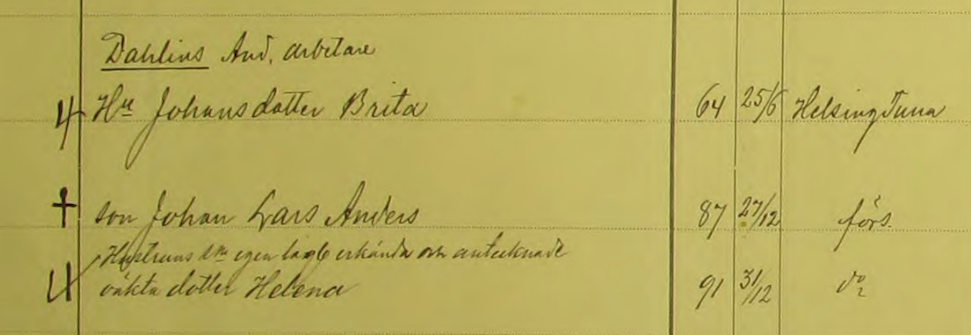
Surprisingly, Brita stayed on with her in-laws during that time 7 and her daughter Helena was born on December 31, 1891.8
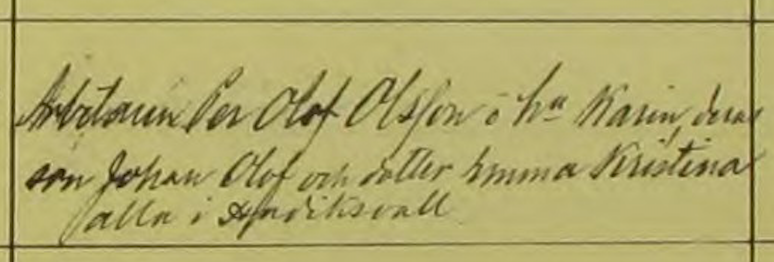
The new baby was baptized several months later on February 27th and the “Dopvittnen” (baptismal witnesses) are listed as Per Olof Olsson, his wife Karin, son Johan Olof, and daughter Emma Christina – the same family with whom Helena went to live when her mother emigrated a year later.9
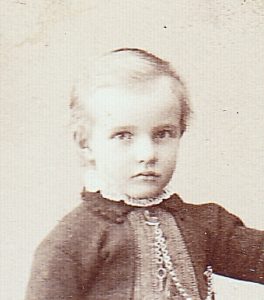
Three and a half months after Helena’s birth, Brita’s four-year-old son Johan died on April 1, 1892, of a lung inflammation.10
And now the day had arrived – January 17, 1893 – when Brita had to face the reality of leaving her one-year-old daughter behind. The emotional pain must have been unbearable.
Most of the information above was discovered during research I conducted over several months last year, primarily from records located at ArkivDigital.
The records I discovered regarding Johan were not a surprise, as my father told me about him years ago. But he did not tell me about Helena – and I suspect he never knew about her.
Once the pieces of the story came together, I had many questions . . .
- Who was Helena’s father?
- How did her in-laws react when they found out Brita was pregnant by another man?
- Why did they let her continue to live with them after she became pregnant?
- Is it possible that one of the three males living in the same house with Brita was Helena’s father?
- Is it plausible that one of the three males living in the same house with Brita was Helena’s father?
- Did Brita stay in touch with Helena, or anyone else who might have been willing to tell her about Helena?
- What happened to Helena? And does she have any surviving descendants?
- Did Andrew know about Helena?
- Other than the relatives in Sweden, did anyone in the family know about Helena?
Many questions.
In Part 2 of this story, I’ll cover Brita’s overland trip from Hudiksvall to Göteborg.
SOURCES
- Even though a married woman, Brita went by her maiden name JOHANSDOTTER while in Sweden. Once in the United States, she took on her husband’s surname. ↩
- According to Swedish records I have located to date, Andrew’s surname was most often spelled DAHLIN in Sweden. Once in the United States, however, the spelling became DALIN. ↩
- Hudiksvall (Gävleborgs län, Hälsingland, Sweden), “Household Records, 1881-1891,” AI:19d; Regional Archives, Uppsala; digital images, “Swedish Church Records,” ArkivDigital (http://www.arkivdigital.net/sources/3099 : 20 March 2016), for Hudiksvall AI:19d (also numbered 135594.b1), image 241. ↩
- Hudiksvall, “Household Records, 1881-1891,” AI:19d. ↩
- Hudiksvall, “Household Records, 1881-1891,” AI:19d. ↩
- Sweden, Indexed Birth Records, 1860-1941, digital images, Ancestry.com (http://www.ancestry.com), Gävleborg County, Söderhamn Parish, year 1888 (image 26 of 26), Johan Lars Anders entry on right-hand side page, item 2, which page is actually part of Hudiksvall Parish. ↩
- Hudiksvall (Gävleborgs län, Hälsingland, Sweden), “Congregation Records, 1891-1900,” Alla:1c; Regional Archives, Uppsala; digital images, “Swedish Church Records,” ArkivDigital (http://www.arkivdigital.net/sources/3099 : 20 March 2016), for Hudiksvall Alla:1c (also numbered 35600), image 90. ↩
- Hudiksvall (Gävleborgs län, Hälsingland, Sweden), “Birth and Christening Records, 1879-1894,” CI:5; Regional Archives, Uppsala; digital images, “Swedish Church Records,” ArkivDigital (http://www.arkivdigital.net/sources/3099 : 20 March 2016), for Hudiksvall CI:5 (also numbered 135624), image 280. ↩
- Hudiksvall, “Birth and Christening Records, 1879-1894,” CI:5; also see Hudiksvall (Gävleborgs län, Hälsingland, Sweden), “Congregation Records, 1891-1900,” Alla:1c; Regional Archives, Uppsala; digital images, “Swedish Church Records,” ArkivDigital (http://www.arkivdigital.net/sources/3099 : 20 March 2016), for Hudiksvall Alla:1c (also numbered 35600), image 316. ↩
- Sweden, Selected Indexed Death Records, 1840-1860 and 1878-1942, Ancestry.com (http://www.ancestry.com), Gävleborg County, Hudiksvall Parish, year 1892 (image 3 of 16), Johan Lars Anders Dahlin entry on left-side page, item 34. ↩
